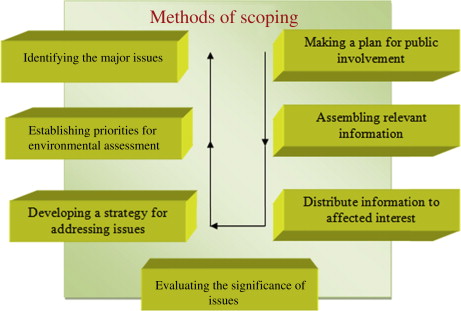Environmental Impact Analysis (EIA) is a critical process used to evaluate the potential environmental consequences of proposed projects or actions. In an era of rapid industrialization and urbanization, EIAs are vital for assessing how development projects, such as infrastructure development, mining, or deforestation, impact the environment. This article delves into the intricacies of EIA, exploring its methodologies, importance, challenges, and the balance it seeks to maintain between development and environmental conservation.
Understanding Environmental Impact Analysis
EIA is a process used to anticipate the environmental consequences of a project or action before it begins. This analysis assesses both the direct and indirect effects on the environment, including impacts on air, water, soil, flora, fauna, and human health. The objective is to identify potential environmental risks and propose measures to mitigate or prevent these effects.
The EIA Process
The EIA process typically involves several key steps:
- Screening: Determining whether a project requires an EIA and the level of detail needed.
- Scoping: Identifying the key environmental issues and concerns to be addressed.
- Impact Assessment: Analyzing potential environmental impacts and developing alternatives to mitigate negative effects.
- Public Involvement: Engaging with stakeholders, including the public, experts, and government bodies, for their input.
- Reporting: Documenting the findings of the EIA in an Environmental Impact Statement (EIS).
- Review and Decision-making: Evaluating the EIS and making informed decisions about the project’s future.
- Monitoring and Compliance: Ensuring that mitigation measures are implemented and followed up on post-project completion.
Significance of Environmental Impact Analysis
EIA plays a crucial role in sustainable development by:
- Preventing Environmental Damage: Identifying potential environmental impacts before they occur.
- Informing Decision Makers: Providing comprehensive data to policymakers and stakeholders to make informed decisions.
- Promoting Transparency: Making information available to the public, ensuring accountability.
- Encouraging Sustainable Practices: Pushing for environmentally friendly alternatives and practices.
Methodologies in EIA
EIA methodologies vary depending on the project but generally include:
- Baseline Studies: Assessing the existing environmental conditions before the project begins.
- Predictive Techniques: Using models to predict potential impacts.
- Comparative Analysis: Comparing impacts of different alternatives or scenarios.
Challenges in Environmental Impact Analysis
EIA faces several challenges:
- Data Availability and Quality: Access to reliable and comprehensive environmental data can be limited.
- Complexity of Environmental Systems: Predicting impacts on complex ecosystems is often fraught with uncertainties.
- Economic Pressures: Balancing environmental protection with economic development goals.
- Public Participation: Ensuring meaningful engagement of all stakeholders, including marginalized communities.
- Political Influence: Political agendas and pressures can sometimes overshadow environmental concerns.
Balancing Development and Nature
A crucial aspect of EIA is balancing economic development with environmental preservation. This involves:
- Mitigation Hierarchy: Prioritizing avoidance of impacts, then minimizing, restoring, and finally compensating for any unavoidable damage.
- Sustainable Development: Encouraging development that meets current needs without compromising the ability of future generations to meet their own needs.
- Eco-friendly Alternatives: Exploring alternative approaches or technologies that have less environmental impact.
Global Standards and Regulations
The EIA process is guided by various international and national laws and guidelines, including:
- United Nations Environmental Programme (UNEP): Provides guidance on conducting EIAs.
- National Environmental Policy Acts: Many countries have specific laws mandating EIAs for certain types of projects.
Case Studies and Lessons Learned
Analyzing past EIA case studies provides valuable insights into best practices and lessons learned, helping to improve future analyses.
The Role of Technology in EIA
Advancements in technology, like GIS (Geographic Information Systems) and remote sensing, have significantly improved the accuracy and efficiency of EIAs.
Ethical and Social Considerations
EIA must consider not only environmental impacts but also social and ethical implications, particularly the effects on local communities and indigenous populations.
Future Directions in Environmental Impact Analysis
Future trends in EIA include:
- Integrating Climate Change Considerations: Assessing how projects contribute to climate change and are influenced by it.
- Cumulative Impact Assessment: Evaluating the combined impact of multiple projects or actions in a region.
- Enhanced Stakeholder Engagement: Utilizing digital platforms for broader and more effective public participation.
Conclusion
Environmental Impact Analysis is an indispensable tool in our collective effort to preserve the natural world while pursuing socio-economic development. It serves as a crucial checkpoint, ensuring that environmental costs are thoroughly evaluated and mitigated. As we move forward, the enhancement and strict enforcement of EIA processes will be key in safeguarding our planet for future generations.

